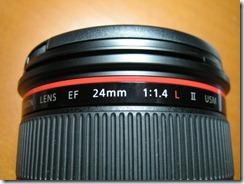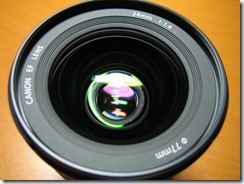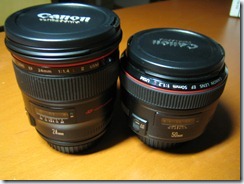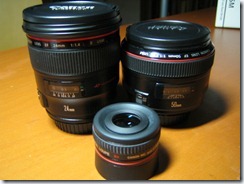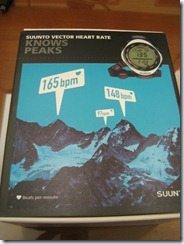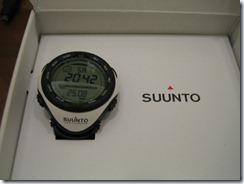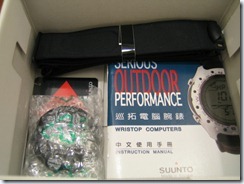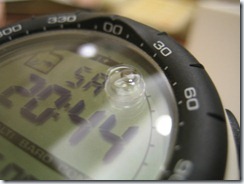Archive for 2011 年 06 月|Monthly archive page
有心率錶功能的登山錶:SUUNTO VECTOR HR
(2011.6.28.11360)
自從有在跑HIIT後,發現知道自己的心跳到底跳了多少,真的是很重要的一件事情。不知道心跳數,就不知道到底有沒有到達目標,搞不好已經操爆了都還不知道。跑步機上有心跳測量功能,不過也是秀逗秀逗的,亂跳一通。又不想買有心率帶的心率錶,因為那條束在胸前的心率帶,活像束衣,不知情的還以為是胸罩,搞不好還要被警察關切。
於是買了一個"心跳戒指運動錶",掛在手指唷,很大一ㄇㄞ,可是總比被誤會帶胸罩好。但是,完全測不準心跳,亂跳一通,用了三天就把它賠錢賣了。後來知道這是用感應手指微血管來偵測心跳的,但不準就是不準。
再買了一個博依PM18運動心率錶,這個錶對於心跳的速率量的相當準(我後來和SUUNTO VECTOR HR比對得知的),而且攜帶方便又可以當運動型手錶來用。可是,(幹~可是又來了),這位老兄只有在他爽的時候才會量你的心跳,皮膚太乾他不量,皮膚太濕他不量(運動時流的滿身汗),你在動他也不量,太瘦太胖他也不量……,最後,他死都不量了,你要給他亂按按鍵一通,他才勉為其難的量一下,量好後又死掉了。常常,為了量一個心跳,只好靜止不動,還要先把汗擦乾淨,然後手指按住錶面,傻傻的等他一分鐘,結果什麼也沒量到又跳回時間模式。哇哩咧~~~
好吧~痛下決心來穿胸罩了~
SUUNTO之前要選心率錶時就已經看很多了,但礙於胸罩問題就是沒買。這次好好的再給他找一下,那些 T還有M系列的,都只有心跳錶的功能,可是就沒有其他的了。那天看到同學帶了一顆G-Shock,還有氣壓溫度的功能,真是炫到極點,加上最近還有在爬山,看能不能也來台五合一的,不然爬個山手上掛了兩個手錶,真的是炮掉了。剛好就是這顆SUUNTO VECTOR HR,有氣壓海拔溫度心率時間的功能(只差沒有GPS,但聽說SUUNTO的GPS是垃圾,因為他不能記錄軌跡,他只是協助用來算你跑的距離和速度而已,如果真的是這樣,那真的連雞肋都不如了)。
這是有測量Heart rate功能的Vector
還好不是支那做的,不然爽度大減。
看起來很小,但是戴在手上也是很大一ㄇㄞ,聽說這樣才有陽剛味。另一款是全黑的,本想買那一咖,但是沒有,還好這個白很漂亮,而不像網站上把它拍成灰的(不然真的吐血),戴這個白的與眾不同。
中英文說明書,還有心率帶
靠北,怎麼一買來,錶面就已經起泡了?還好有看一下說明書,這個水平用的氣泡唷。
果然裡面有一個小泡泡會游來游去。
立刻給他戴上騎車去,果然正確量測心跳,爽度一百,但是穿胸罩的陰影始終揮之不去。那個心率帶要勒緊,不然跑步的時候真的會掉,可是這樣一勒,油全部被勒出來,形成副乳。再來就是錶面都是數字,看起來比較low,但是功能一堆,很夠用了。
Diamox治療高山症
Acute Mountain Sickness:
Dosage is 500 mg to 1000 mg daily, in divided doses using tablets or sustained-release capsules as appropriate. In circumstances of rapid ascent, such as in rescue or military operations, the higher dose level of 1000 mg is recommended. It is preferable to initiate dosing 24 to 48 hours before ascent and to continue for 48 hours while at high altitude, or longer as necessary to control symptoms.
http://www.agingeye.net/glaucoma/diamox.pdf
Main side effects of Diamox in children :
The main side effects of Diamox in children include nausea/vomiting, tiredness, and loss of appetite. Less commonly children may experience diarrhea, bedwetting, more frequent urination, and tingling and numbness of hands and feet. These side effects tend to lessen with continued use. Taking the medication with food may help minimize these problems. The inhibition of carbonic anhydrase can affect the blood chemistry in the body. In particular, it may result in loss of potassium. This effect is worse in children with preexisting kidney or liver disease, or children on other drugs which also affect potassium levels, such as steroids, drugs used for heart failure or hypertension. Caution and monitoring is therefore important while using carbonic anhydrase inhibitors in such children. These drugs contain a sulfur molecule. Therefore they are avoided, or used only with careful monitoring, in patients with sulfa allergy. Patients with sickle cell disease or related problems with their blood hemoglobin may also react adversely to these drugs. Although we have used Diamox safely in children for many years of their life, rarely growth can be adversely affected. All side effects discussed here are generally milder with Neptazane.
Pharmacy Corner – Acetazolamide & Methazolamide http://www.pgcfa.org/kb/entry/162/
Dosage
This medication is also known to be a diuretic: it stimulates increased production of urine. Increased frequency of urination is a common effect of Diamox and usually has no significant medical consequences in children. Usually, the medication is given four times daily with the dose adjusted to correspond with the child’s weight. As such, the last dose is usually given before bedtime and in the occasional child, bedwetting (enuresis) may begin. If this is the case, with supervision from your physician, there are a few options. The dos of Diamox can be altered to three times daily by increasing each dose so that the total dose remains acceptable. One can also change the dose-body weight ratio for the child. Usually the child is given somewhere between 15-30 mg per kilogram per day total dose. If a child is up on the higher end of this range and having bedwetting, one could decrease the total daily dose, while still keeping within this range, as long as the intraocular pressure continues to be well controlled. There is an extended release form of Diamox which only requires twice daily dosing but it unfortunately does not come in a small enough dosage to allow its use in preadolescent children: the same population that is most likely to have bedwetting occur. Lastly, one might consider switching to other medications. Neptazane (methazolamide) has a similar effect on intraocular pressure but causes less of an effect on urination. However, this medication in tablet form may be harder to break into smaller doses and there is not a commonly available liquid form. There is a new eyedrop on the market, Trusopt (dorzolamide) which is the same class of drug (carbonic anhydrase inhibitors) as Diamox and Neptazane but by placing it directly onto the eye, one does not get the systemic effects such as increased frequency of urination.
Diamox and bedwetting http://www.pgcfa.org/kb/entry/28/
 發表留言
發表留言